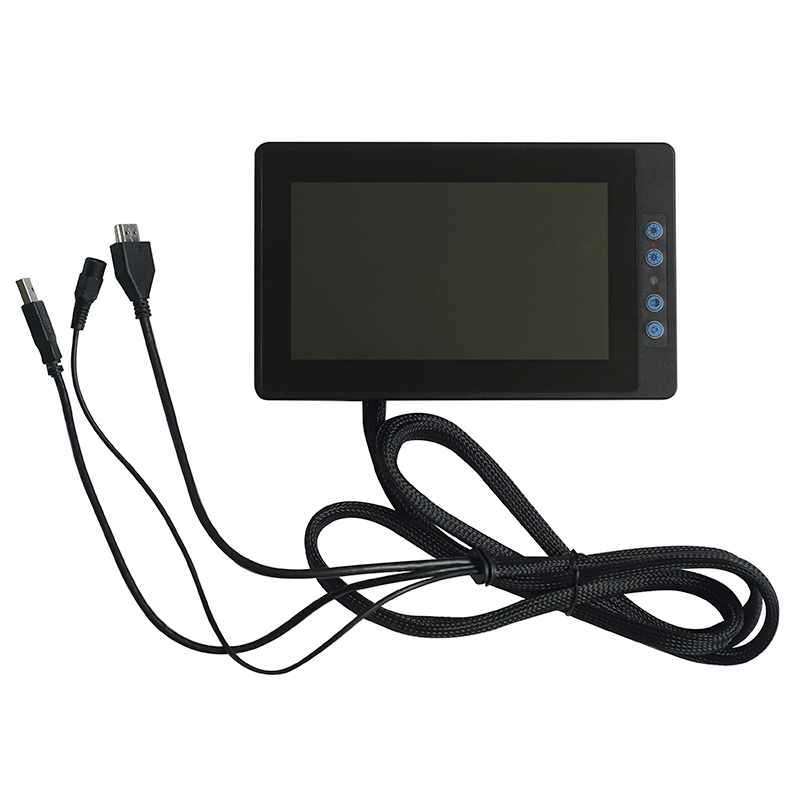How to waterproof LCD display?
Introduction:
Liquid Crystal Display (LCD) technology has become an integral part of our daily lives, powering a myriad of devices ranging from smartphones to televisions and industrial control panels. Despite their widespread use, LCD displays are vulnerable to damage from liquids, making waterproofing a crucial consideration for various applications. Whether you're working on an outdoor digital signage project or simply want to safeguard your electronic devices from accidental spills, understanding how to waterproof an LCD display is essential. In this comprehensive guide, we will explore the key steps and considerations for effectively waterproofing LCD displays.

Understanding the Vulnerabilities:
LCD displays consist of delicate components, including liquid crystals and electronic circuitry, which can be severely damaged by exposure to moisture. Water infiltration can lead to malfunctions, corrosion, and irreparable damage, rendering the display useless. Therefore, waterproofing becomes imperative, especially in environments where exposure to rain, humidity, or accidental spills is likely.
Choosing the Right Waterproofing Method:
There are several methods to waterproof an LCD display, each with its own advantages and considerations. Here are some common techniques employed in the industry:
Encapsulation with Seals:
Encapsulating the LCD display with seals and gaskets is a popular method. This involves creating a physical barrier around the display to prevent water ingress.
High-quality silicone seals and gaskets are commonly used due to their flexibility and resistance to environmental factors.
Coating with Liquid Repellents:
Applying a hydrophobic coating to the surface of the LCD can repel water and prevent it from sticking to the screen.
Nano-coatings, which create a microscopic protective layer, are effective in making the surface water-resistant.
IP-Rated Enclosures:
In industrial settings or outdoor applications, using Ingress Protection (IP)-rated enclosures is a robust solution. These enclosures provide a standardized level of protection against solids and liquids.
Steps to Waterproof an LCD Display:
Disassembly:
Before applying any waterproofing measures, disassemble the device carefully, separating the LCD display from other components.
Take note of the location of buttons, ports, and connectors, as they will also need protection.
Sealing the Edges:
One critical area for water ingress is the edges of the LCD display. Ensure that these edges are properly sealed with high-quality gaskets or silicone seals.
Pay close attention to corners and areas where the display is joined with the device's housing.
Application of Hydrophobic Coating:
Apply a hydrophobic coating to the surface of the LCD. This can be done using a spray, dip, or wipe-on application.
Follow the manufacturer's instructions regarding the number of coating layers and drying times.
Protecting Openings and Ports:
Ports, buttons, and other openings in the device's housing are potential entry points for water. Seal these areas with waterproof grommets or covers.
Ensure that protective measures do not compromise the functionality of buttons or ports.
IP-Rated Enclosures:
If the LCD display is part of an outdoor system, consider enclosing the entire device in an IP-rated enclosure.
Verify that the enclosure's IP rating matches the environmental conditions it will be exposed to.
Testing:
Before reassembling the device, conduct thorough water-resistance tests. Simulate real-world scenarios such as rain exposure or water splashes to ensure the effectiveness of the waterproofing measures.
Address any issues found during testing before finalizing the assembly.
Conclusion:
Waterproofing LCD displays is a critical step in ensuring the longevity and functionality of electronic devices, especially in environments prone to moisture exposure. Whether you are a product designer, manufacturer, or a tech-savvy individual, understanding the vulnerabilities of LCD displays and the various waterproofing methods is essential. By following the steps outlined in this guide, you can enhance the resilience of LCD displays, making them better equipped to withstand the challenges posed by the elements. As technology continues to advance, integrating effective waterproofing measures will become increasingly important for the reliability and durability of electronic devices in a wide range of applications.
221
0
0


Comments
All Comments (0)